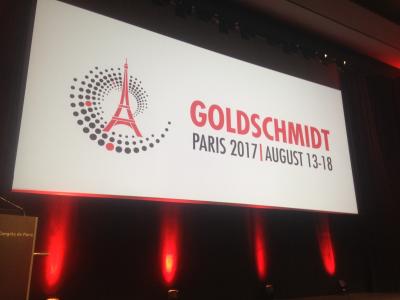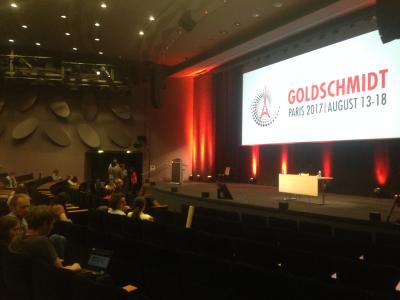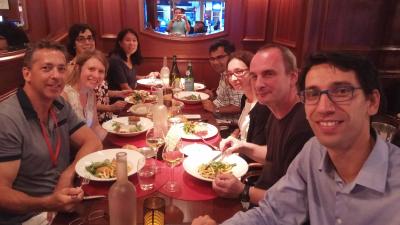The Labex Serenade was part of the session 13O at the Goldschmidt Conference in Paris : "Role of Colloidal/Nanoparticulate transport and speciation: assessing the environmental risk of contamination."
Convenors : Jérôme Labille, Camille de Garidel-Thoron, Jose Paulo Soares Pinheiro, Patrick Ollivier, Armand Masion
Keynotes: Nathalie Tufenkji (Mc Gill University), Raewyn Town (University of Antwerpen).
The risk associated with the presence of contaminants in the aqueous environment is an ever-emerging concern for both human health and ecotoxicology. Pharmaceutical, pesticides and microplastics are found recalcitrant in the water cycle. Nanotechnology-enabled products have been shown to release nanoparticles to the aqueous environment throughout their lifecycle. Potentially toxic metals are known ubiquitous in natural environments.These risks are likely to evolve during the life cycle and environmental fate of the product, as transformations during the use- and end of life phases may modify the hazard linked to the contaminant as well as their exposure potential. Interaction with geogenic materials is known to strongly control the speciation, transport, exposure and hazard of contaminants. Prevalent amongst the ligands are different types of colloidal particles, including natural organic matter, biopolymers, natural iron and manganese oxides, clays. Transport in the water column is driven by sticking to suspended colloids (adsorption, heteroaggregation), which may lead to colloidal transport or sedimentation. In porous media, the contaminant mobility or retention is function of the attachment to the matrix. Regarding metals, understanding of the speciation and bioavailability requires not only the knowledge of metal-binding equilibrium parameters, but also the kinetic fluxes and transport to the relevant surfaces of the various metal species in solution, considering the relevant timescale. The overall risk associated to these contaminants could be minimized through intelligent design or disposal of the originating products. The end-of-life of these products, as well as the safe by design aspects are potential levels to reduce their impact on the surrounding environment. The objective of this session is to bring together experts on contaminant speciation, exposure and hazard, in order to address all the aspects constituting the overall environmental risk. This includes both experimental and modelling researches examining the bio-physical-chemical mechanisms involved.
Please find more details on the Goldschmidt website








